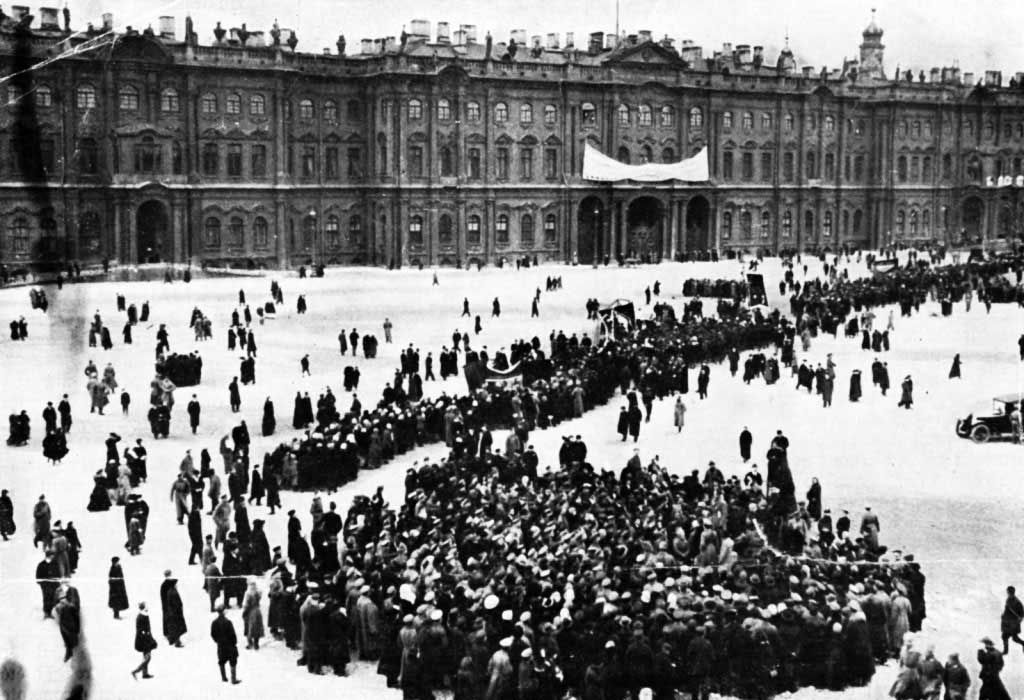1917
As a result of the World War I catastrophe, the people of St. Petersburg took to the streets and forced the tsar to abdicate. Lenin seized the opportunity to take power, and a bloody civil war followed.

Demonstrators Gathering In Front of the Winter Palace in Petrograd. Photographer Unknown (January 1917)
Background
In 1914, Russia eagerly entered World War I against Germany and Austria-Hungary. That decision had catastrophic social and economic results for Russia.
State and society
By abdicating the throne, Tsar Nicholas II had made all the Russian people free overnight. There was of course joy and freedom in the air. At that time, all means of government were equally possible for Russia.
It was decided that the general elections would be held as soon as possible and the Constituent Assembly would then decide whichever form of government was best for Russia. Until then, power would be in the hands of the Provisional Government formed by the Duma.
After the October Revolution the entire system of state governing was revised according to Lenin’s theory. The Council of People’s Commissars was the executive power during the whole revolution.
Russian Revolution
1917
As a result of the World War I catastrophe, the people of St. Petersburg took to the streets and forced the tsar to abdicate. Lenin seized the opportunity to take power, and a bloody civil war followed.
Demonstrators Gathering In Front of the Winter Palace in Petrograd. Photographer Unknown (January 1917)
Background
In 1914, Russia eagerly entered World War I against Germany and Austria-Hungary. That decision had catastrophic social and economic results for Russia.
State and society
By abdicating the throne, Tsar Nicholas II had made all the Russian people free overnight. There was of course joy and freedom in the air. At that time, all means of government were equally possible for Russia.
It was decided that the general elections would be held as soon as possible and the Constituent Assembly would then decide whichever form of government was best for Russia. Until then, power would be in the hands of the Provisional Government formed by the Duma.
After the October Revolution the entire system of state governing was revised according to Lenin’s theory. The Council of People’s Commissars was the executive power during the whole revolution.
February Revolution